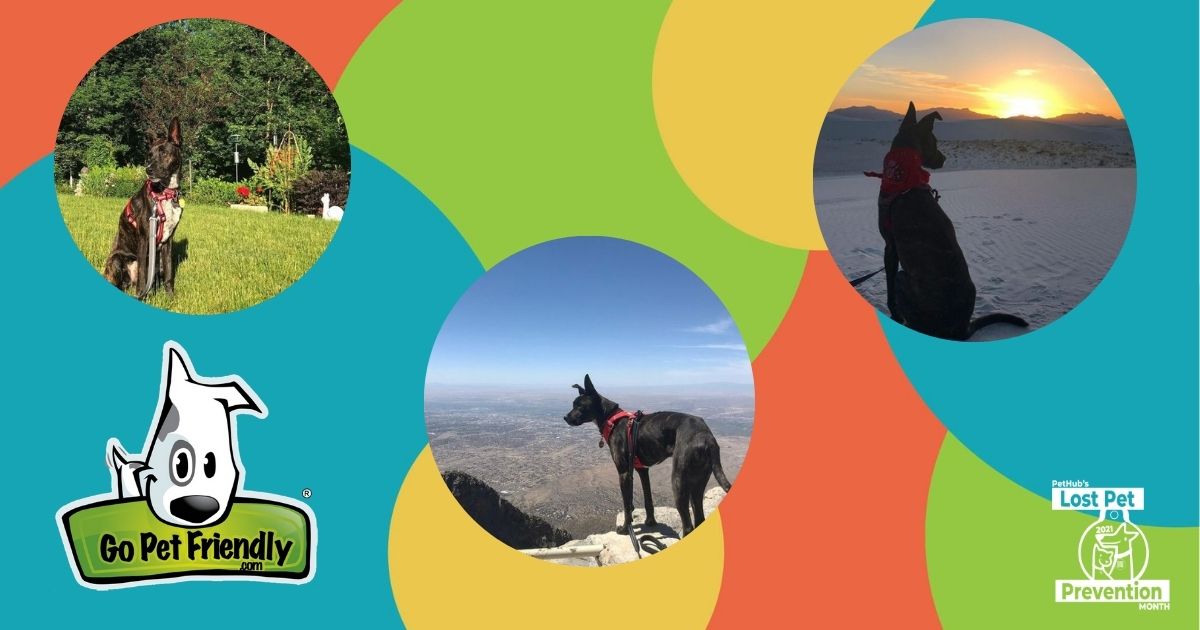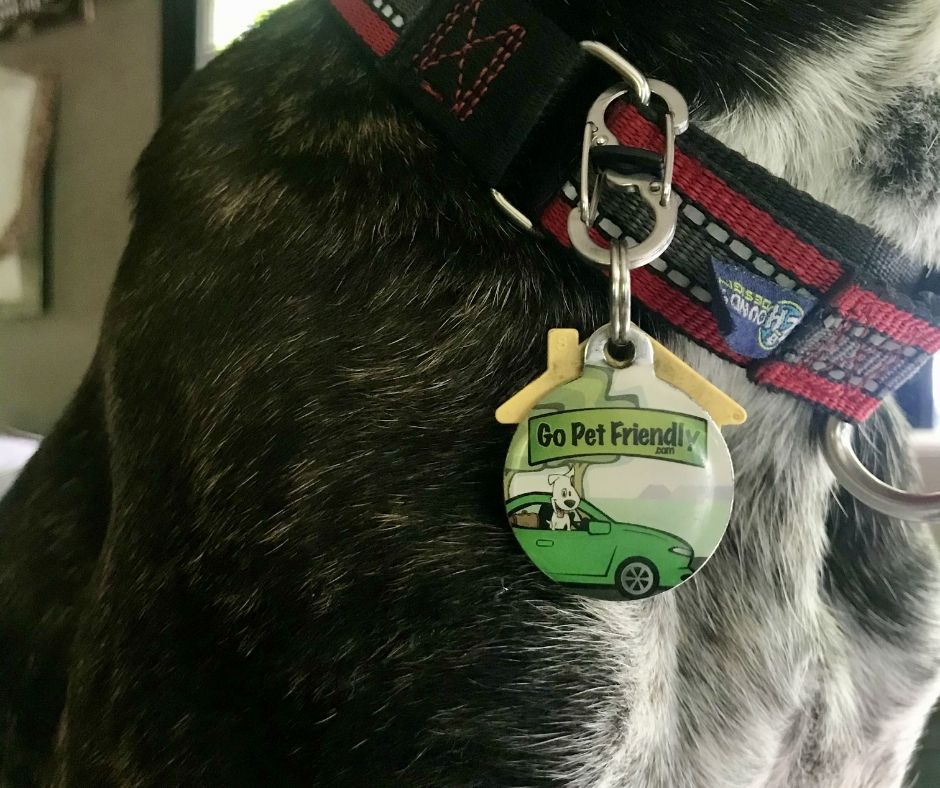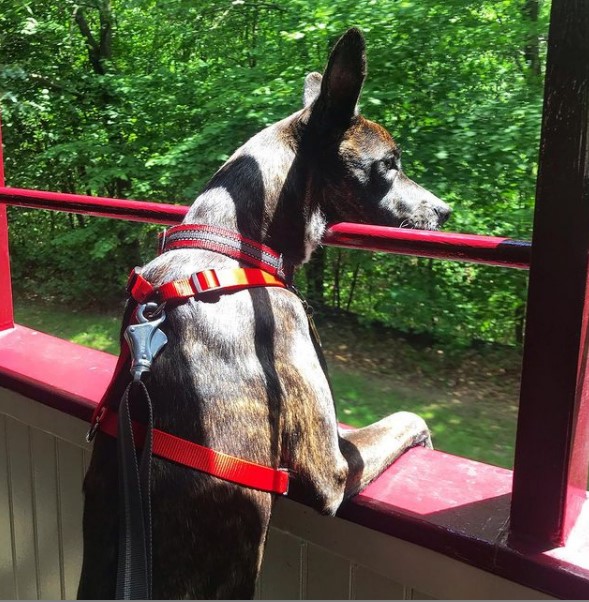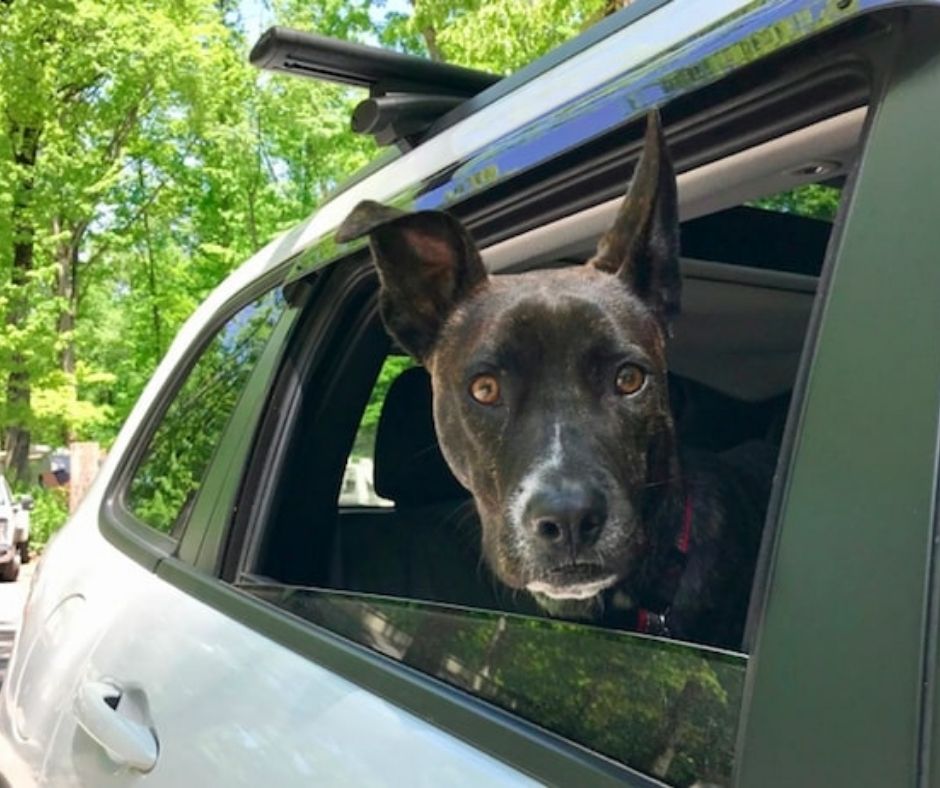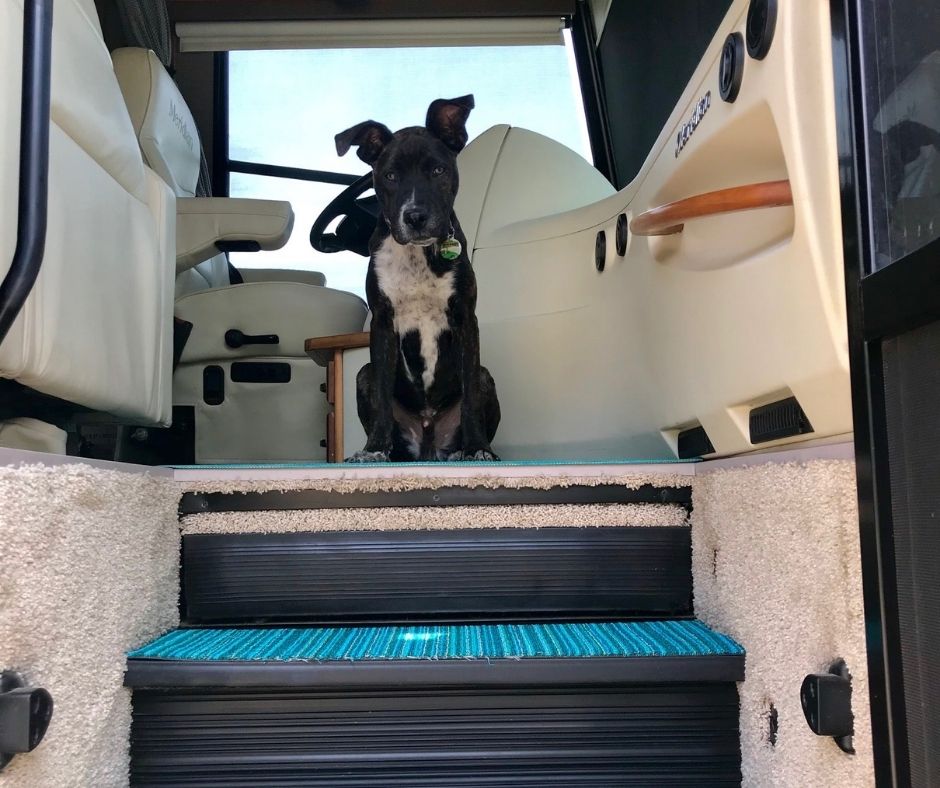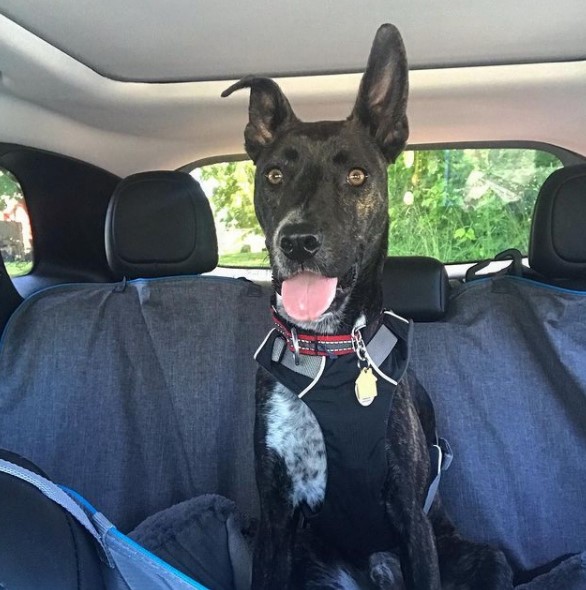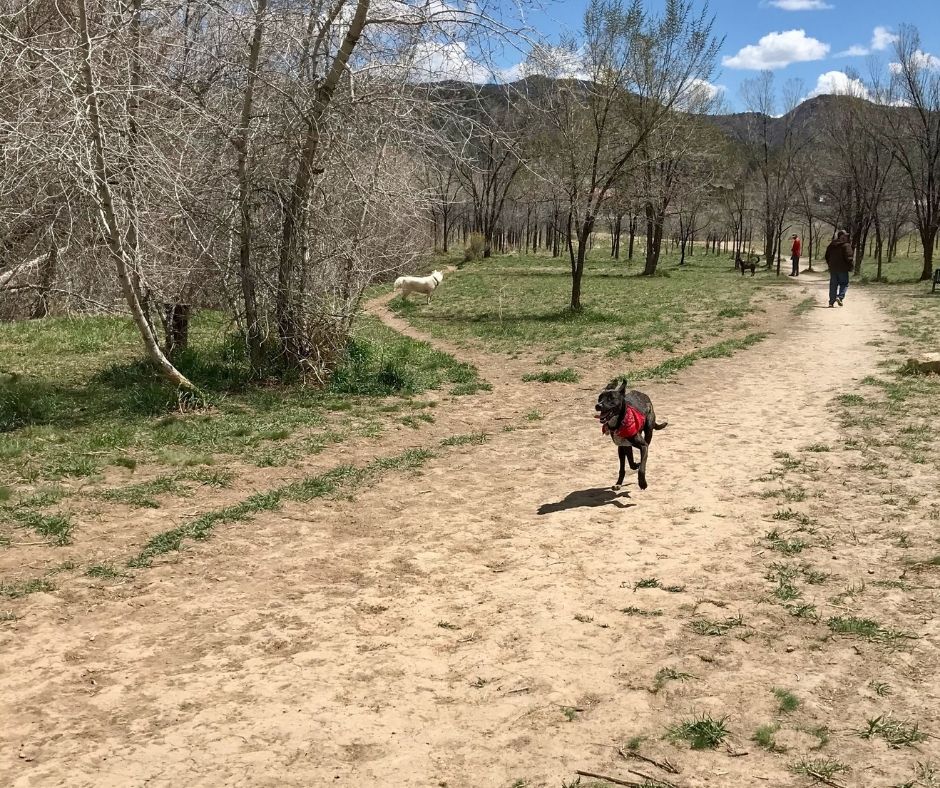This is a featured guest post from GoPetFriendly with Amy Burkert
Traveling with your pets is a great way to make memories together. But having your pets off their normal routine and in unfamiliar environments means more things can go wrong and pets can get lost. Those are not the kind of memories you want to make! So follow these tips to help keep your pets from getting lost while you travel.
1. Make sure your pet’s ID tag and microchip information are up-to-date.
The information on your pet’s ID tag should include a phone number where you can be reached while you’re traveling. If you’ll be traveling in an area with spotty cell reception, include an alternate emergency contact number.
2. Be sure your pets collar and harness fit correctly.
Your pet’s ID tag is his first line of defense if he should go missing, so take a moment and make certain his collar fits properly. The collar should be snug around your dog or cat’s neck, allowing just enough room to slip two fingers underneath. If the collar is too loose it could slip over your pet’s head if they’re startled and back up.
3. Buckle up in the car.
A seat belt harness or secured carrier will not only keep your pet safe in a collision, it will also keep him from jumping out of the car while you’re focused on other things.
Rear seats or the back of a vehicle is the safest option for securing your pet while traveling. If using the front seat, disarm the airbag before you start driving.
4. Teach your dog to wait.
One of the best ways to keep your dog from getting lost while you’re traveling is to teach him to “wait.” We use this command with our pup to keep him from running out of the motorhome or jumping out of the car before we’re ready. “Wait” simply means he needs to stay put until we’ve invited him to join us outside the car or RV.
It’s important that you’re consistent when you’re teaching your pet to wait. We’ve made it a point to ask Myles to “wait” every time we leave the motorhome. Once I’m down the steps I turn around and say, “let’s go,” and then he’s welcome to join me. If he jumps out before he’s invited, he’s sent right back in and we try again.
5. Develop a routine for getting into and out of the car.
You might think that once your pet is inside the car, he’s safe. But what if another door is open and your pal scoots out before you’ve secured his seat belt? Good habits will help keep your pet safe. So, when it’s time to leave, put your pet in the car, fasten his seat belt or place him in his carrier, and then remove his leash. When you arrive, reattach his leash before removing him from the carrier or unbuckling the seat belt harness. Follow this routine for all stops – including breaks at rest areas along the way.
6. Skip off-leash playtime.
Your dog might have a solid recall in your back yard, but with new things to sniff and friends to make, he might not be as reliable away from home. If you have a dog who really needs some space to exercise, use GoPetFriendly to find fenced, off-leash dog parks. Or get a long-line leash that will allow your pup to play without the danger of getting away.
Keeping your pets safe while you’re traveling together requires a little more effort. But the investment you make is well worth the effort. The experiences you gather and the memories you make will last a lifetime.
 In 2009, Amy Burkert launched GoPetFriendly, a website that inspires people to do more with their pets and provides the resources they need to plan trips together. With more than 60,000 pet friendly listings across the U.S. and Canada, GoPetFriendly provides information on pet friendly places to stay and things to do.
In 2009, Amy Burkert launched GoPetFriendly, a website that inspires people to do more with their pets and provides the resources they need to plan trips together. With more than 60,000 pet friendly listings across the U.S. and Canada, GoPetFriendly provides information on pet friendly places to stay and things to do.
Since launching GoPetFriendly, Amy and her husband, Rod, have been traveling full-time in their Winnebago with their dogs. With more than eleven years and 200,000 miles behind her, Amy shares pet friendly destination advice and practical pet travel tips on the GoPetFriendly blog.



